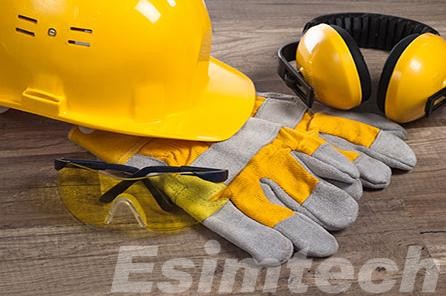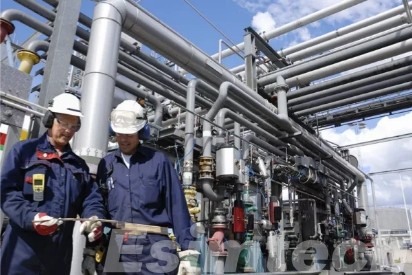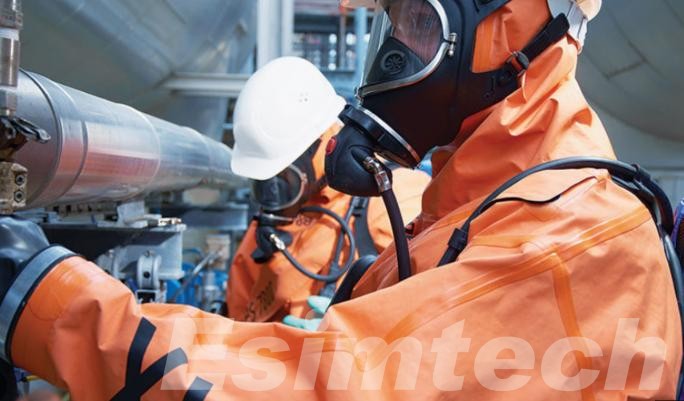5 Must-have Oil and Gas Safety Training Programs for Workers
Oil and gas work environments can be highly dangerous for workers. Effective safety training should not just be seen as a regulatory requirement but rather a lifesaving practice for any oil and gas worker to ensure a safer workplace environment. Here are five essential safety training courses every oil and gas employee should complete to make their workplaces more secure.

Importance of Oil and Gas Safety Training
Safety training in the oil and gas industry is more than a compliance requirement–it’s an absolute essential for life itself. Workers in high-risk environments such as hazardous flammable materials, toxic gases, heavy machinery, and extreme pressures. Without appropriate safety training in place, these hazards could cause major accidents with injuries or even fatalities occurring due to the incompetence on the part of workers or a lack thereof from management.
- Effective safety training equips workers with the ability to recognize risks, follow best practices, and respond promptly in emergencies. For instance, knowing how to address hydrogen sulfide (H2S) leaks or navigate confined spaces safely could mean life or death for their workforces. Compliance training also helps companies avoid legal penalties or costly shutdowns due to OSHA or API standards compliance, saving companies both money and time!
- Beyond avoiding accidents, an effective safety culture boosts productivity by instilling greater employee confidence that helps decrease downtime due to incidents and near misses. Companies that prioritize safety often experience higher morale among staff members, decreased turnover rates, and an improved standing within the industry.
Safety training should be seen as an investment, not just in regulatory compliance but in employee well-being as a whole. By encouraging a proactive approach to hazard prevention, companies protect the most precious resource – their people. In an industry filled with risks, ongoing training ensures safety remains top of mind.
Five Must-Have Oil and Gas Safety Training Programs
The oil and gas industries present special hazards that require specific training courses for workers’ safety. While regulations establish minimum compliance requirements, truly effective programs offer workers practical skills necessary for dealing with real-world dangers. Below are five training courses every oil and gas professional should complete in their career development journey.
Personal Protective Equipment (PPE) Training

Personal Protective Equipment (PPE) is the foundation for safety in the oil and gas industry, but just providing it isn’t enough – workers need to receive comprehensive PPE training on its use, maintenance and inspection. Training ensures employees understand when specific pieces such as helmets, gloves, safety goggles or flame-resistant clothing is required and how best to don or doff gear to maximize protection.
Workers also learn to inspect PPE for damage and wear, to ensure its continued effectiveness throughout its usage. Understanding its limitations is also critical as no single piece of equipment can protect against all hazards; through hands-on training workers are equipped to choose appropriate PPE for every task and effectively manage potential risks so minimizing injuries while guaranteeing their own safety on the job is ensured.
Fire Safety and Emergency Response Training

Oil and gas operations present constant threats of fire due to the presence of flammable liquids, gases, and equipment. Fire safety and emergency response training prepares workers to act quickly and effectively when every second counts – this includes fire prevention strategies, proper handling and storage of hazardous materials, identification of ignition sources as well as learning how to operate fire extinguishers, activate alarm systems and follow evacuation procedures.
Beyond fire-specific protocols, this training involves emergency response planning for more general circumstances–like chemical spills, explosions, or natural disasters. Drills and simulations may be used to build familiarity and confidence; ultimately the goal should be for every worker to know his/her role during an emergency and minimize panic while improving response time. When teams are fully trained and prepared for critical incidents they can save lives, protect assets, and mitigate impact significantly.
Confined Space Entry and Rescue Training
Confined spaces such as storage tanks, pipelines and vessels pose unique hazards that require special training for safe navigation. Such environments typically offer limited entry/exit points with poor ventilation or contain toxic gasses or low oxygen levels that threaten life without adequate precautions being taken; routine tasks could quickly turn deadly without adequate precautions taken beforehand.

Confined Space Entry and Rescue Training provides workers with the ability to recognize potential risks within confined spaces, follow safe entry procedures, use proper protective and atmospheric monitoring equipment and utilize entry permits, standby attendants and communication protocols; additionally it includes rescue techniques if someone becomes incapacitated within such spaces.
Training designed specifically to address tight, hazardous spaces is both preventive and responsive in its approach: it equips teams to work safely in such an environment while being ready to react swiftly in an emergency, making this type of education indispensable to operations involving confined spaces. For any operation involving tight spaces, such training should not just be recommended but essential!
Fall Protection and Prevention Training
Working at height is an inevitable reality in oil and gas operations–on rigs, platforms, scaffolding or elevated equipment–but one of the primary sources of workplace injuries and fatalities. Fall protection training helps employees recognize potential hazards as well as understand how to properly use protection systems like harnesses, lanyards, anchor points guardrails or fall arrest systems correctly.
Training should focus on inspecting equipment prior to use, fitting and adjusting harnesses correctly, and the importance of securing tools so as to prevent dropped object incidents. Furthermore, teaching workers how to assess their surroundings for fall risks as well as respond safely in case of falls or near misses is vitally important.
Companies can significantly lower risks by making fall protection training practical, site-specific, and easily understood for all employees – providing each one with knowledge and confidence needed to remain safe at height.
H2S (Hydrogen Sulfide) Safety Training

Hydrogen sulfide (H2S) is a highly toxic gas commonly found in oil and gas operations. It’s colorless, heavier than air, and smells like rotten eggs—but in high concentrations, it can deaden your sense of smell and become fatal within minutes. H2S safety training is crucial for anyone working in areas where this gas might be present.
This training covers how to recognize H2S hazards, use gas detection equipment, and respond quickly in the event of an exposure. Workers learn about the importance of ventilation, personal protective equipment like air-supplied respirators, and how to follow emergency evacuation procedures. Training also includes how to administer first aid and perform rescues without putting others at risk.
Because H2S can be both fast-acting and deadly, preparation and awareness are key. With proper training, workers are better equipped to stay safe and protect their teammates in hazardous environments.
Best Practices for Implementing Safety Training
To maximize the success of safety training programs, organizations should adopt an in-depth and ongoing strategy. Below are a few essential best practices:
- Continuous Learning: Safety training should never be treated as a one-off event. Refreshers and updates help workers keep safety protocols fresh in their minds and stay current with any regulations or equipment changes.
- Tailored Training: Tailor training programs to the risks and responsibilities specific to each role for greater relevance, engagement and effectiveness in real world situations. This tailored approach makes the training more relevant, engaging and relevant.
- Experience: Combine classroom training with hands-on, scenario-based exercises. Simulating real world situations helps workers better comprehend how to respond in an emergency situation and boosts confidence when using safety procedures and equipment correctly.
- Monitor and Track Progress: Establish a system to monitor training completion and assess worker understanding, helping identify any knowledge gaps while assuring all members are current with certifications and accreditation.
- Foster a Safety Culture: Management should lead by example and display their commitment to safety by prioritizing safety training and prioritizing training, setting an example that encourages workers to take safety seriously, creating an atmosphere in which safety is everyone’s responsibility.
By following these best practices, companies can foster a safer work environment and lower the risks of accidents and injuries.
Summary
Safety training in the oil and gas industry is vital for preventing accidents and protecting workers. Programs like PPE, fire safety, and H2S awareness build essential skills and preparedness. With the right training and implementation, companies can reduce risks, ensure compliance, and create a safer, more efficient work environment for everyone on site.

